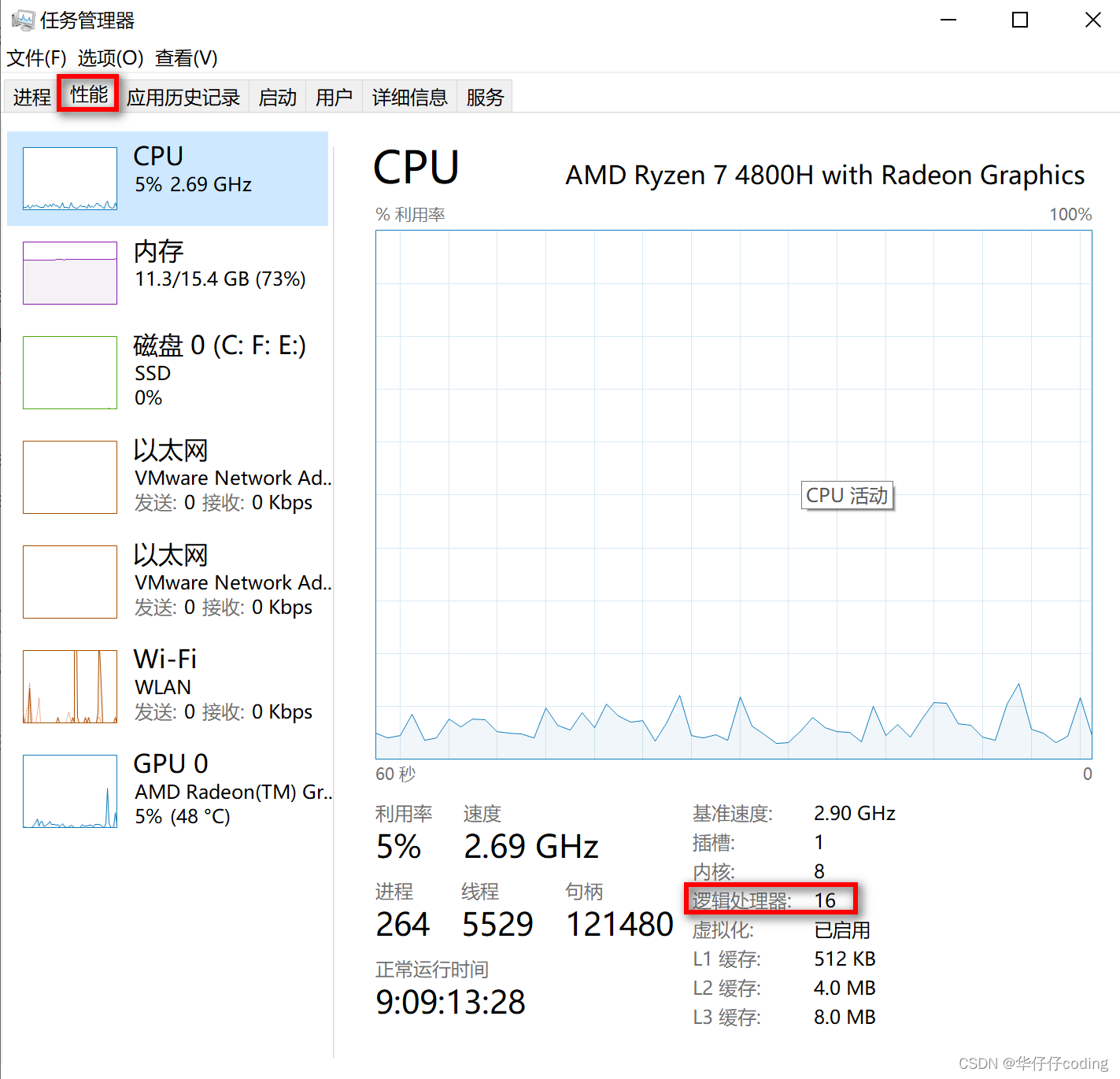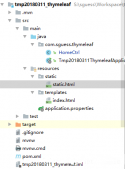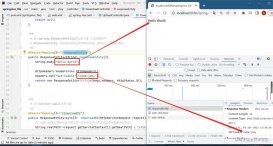工作场景中遇到这样一个需求:根据主机的 IP 地址联动更新其他模型的相关信息。需求很简单,只涉及一般的数据库联动查询以及更新操作,然而在编码实现过程中发现,由于主机的数量很多,导致循环遍历查询、更新时花费很长的时间,调用一次接口大概需要 30-40 min 时间才能完成操作。
因此,为了有效缩短接口方法的执行时间,便考虑使用多线程并发编程方法,利用多核处理器并行执行的能力,通过异步处理数据的方式,便可以大大缩短执行时间,提高执行效率。
这里使用可重用固定线程数的线程池 FixedThreadPool,并使用 CountDownLatch 并发工具类提供的并发流程控制工具作为配合使用,保证多线程并发编程过程中的正常运行:
-
首先,通过
Runtime.getRuntime().availableProcessors()方法获取运行机器的 CPU 线程数,用于后续设置固定线程池的线程数量。 -
其次,判断任务的特性,如果为计算密集型任务则设置线程数为
CPU 线程数+1,如果为 IO 密集型任务则设置线程数为2 * CPU 线程数,由于在方法中需要与数据库进行频繁的交互,因此属于 IO 密集型任务。 -
之后,对数据进行分组切割,每个线程处理一个分组的数据,分组的组数与线程数保持一致,并且还要创建计数器对象
CountDownLatch,调用构造函数,初始化参数值为线程数个数,保证主线程等待所有子线程运行结束后,再进行后续的操作。 -
然后,调用
executorService.execute()方法,重写run方法编写业务逻辑与数据处理代码,执行完当前线程后记得将计数器减1操作。 - 最后,当所有子线程执行完成后,关闭线程池。
在省略工作场景中的业务逻辑代码后,通用的处理方法示例如下所示:
|
1
2
3
4
5
6
7
8
9
10
11
12
13
14
15
16
17
18
19
20
21
22
23
24
25
26
27
28
29
30
31
32
33
34
35
36
37
38
39
40
41
42
43
44
45
46
47
48
49
|
public ResponseData updateHostDept() { // ... List<Map> hostMapList = mongoTemplate.find(query, Map.class, "host"); // split the hostMapList for the following multi-threads task // return the number of logical CPUs int processorsNum = Runtime.getRuntime().availableProcessors(); // set the threadNum as 2*(the number of logical CPUs) for handling IO Tasks, // if Computing Tasks set the threadNum as (the number of logical CPUs) + 1 int threadNum = processorsNum * 2; // the number of each group data int eachGroupNum = hostMapList.size() / threadNum; List<List<Map>> groupList = new ArrayList<>(); for (int i = 0; i < threadNum; i++) { int start = i * eachGroupNum; if (i == threadNum - 1) { int end = mapList.size(); groupList.add(hostMapList.subList(start, end)); } else { int end = (i+1) * eachGroupNum; groupList.add(hostMapList.subList(start, end)); } } // update data by using multi-threads asynchronously ExecutorService executorService = Executors.newFixedThreadPool(threadNum/2); CountDownLatch countDownLatch = new CountDownLatch(threadNum); for (List<Map> group : groupList) { executorService.execute(()->{ try { for (Map map : group) { // update the data in mongodb } } catch (Exception e) { e.printStackTrace(); } finally { // let counter minus one countDownLatch.countDown(); } }); } try { // main thread donnot execute until all child threads finish countDownLatch.await(); } catch (Exception e) { e.printStackTrace(); } // remember to shutdown the threadPool executorService.shutdown(); return ResponseData.success();} |
那么在使用多线程异步更新的策略后,从当初调用接口所需的大概时间为 30-40 min 下降到了 8-10 min,大大提高了执行效率。
需要注意的是,这里使用的
newFixedThreadPool创建线程池,它有一个缺陷就是,它的阻塞队列默认是一个无界队列,默认值为Integer.MAX_VALUE极有可能会造成 OOM 问题。因此,一般可以使用ThreadPoolExecutor来创建线程池,自己可以指定等待队列中的线程个数,避免产生 OOM 问题。
|
1
2
3
4
5
6
7
8
9
10
11
12
13
14
15
16
17
18
19
20
21
22
23
24
25
26
27
28
29
30
31
32
33
34
35
36
37
38
39
40
41
42
43
44
45
46
47
48
49
50
|
public ResponseData updateHostDept() { // ... List<Map> hostMapList = mongoTemplate.find(query, Map.class, "host"); // split the hostMapList for the following multi-threads task // return the number of logical CPUs int processorsNum = Runtime.getRuntime().availableProcessors(); // set the threadNum as 2*(the number of logical CPUs) for handling IO Tasks, // if Computing Tasks set the threadNum as (the number of logical CPUs) + 1 int threadNum = processorsNum * 2; // the number of each group data int eachGroupNum = hostMapList.size() / threadNum; List<List<Map>> groupList = new ArrayList<>(); for (int i = 0; i < threadNum; i++) { int start = i * eachGroupNum; if (i == threadNum - 1) { int end = mapList.size(); groupList.add(hostMapList.subList(start, end)); } else { int end = (i+1) * eachGroupNum; groupList.add(hostMapList.subList(start, end)); } } // update data by using multi-threads asynchronously ThreadPoolExecutor executor = new ThreadPoolExecutor(5, 8, 30L, TimeUnit.SECONDS, new ArrayBlockingQueue<>(100)); CountDownLatch countDownLatch = new CountDownLatch(threadNum); for (List<Map> group : groupList) { executor.execute(()->{ try { for (Map map : group) { // update the data in mongodb } } catch (Exception e) { e.printStackTrace(); } finally { // let counter minus one countDownLatch.countDown(); } }); } try { // main thread donnot execute until all child threads finish countDownLatch.await(); } catch (Exception e) { e.printStackTrace(); } // remember to shutdown the threadPool executor.shutdown(); return ResponseData.success();} |
在上述的代码中,核心线程数和最大线程数分别为 5 和 8,并没有设置的很大的值,因为如果如果设置的很大,线程间频繁的上下文切换也会增加时间消耗,反而不能最大程度上发挥多线程的优势。至于如何选择合适的参数,需要根据机器的参数以及任务的类型综合考虑决定。
最后补充一点,如果想要通过非编码的方式获取机器的 CPU 线程个数也很简单,windows 系统通过任务管理器,选择 “性能”,便可以查看 CPU 线程个数的情况,如下图所示:

从上图可以看到,我的机器中内核是八个 CPU,但是通过超线程技术一个物理的 CPU 核心可以模拟成两个逻辑 CPU 线程,因此我的机器是支持8核16线程的。
到此这篇关于Java 多线程并发编程提高数据处理效率的文章就介绍到这了,更多相关Java 多线程提高数据处理效率内容请搜索服务器之家以前的文章或继续浏览下面的相关文章希望大家以后多多支持服务器之家!
原文链接:https://blog.csdn.net/weixin_43252521/article/details/127143078














